Our world is just so big and wonderful. why not learn something cool about it you never knew before?
You’re probably thinking: Hold your horses.
Reading 200 facts will take forever, I’m not going to do that.
Well, you can start and read only about the things which interest you most and see how it goes, you got nothing to lose. 😉
Contents
Milky Way
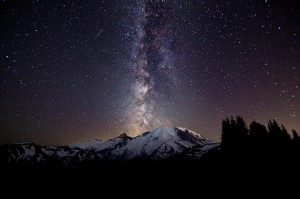
- The Milky Way is about 100 thousand to 120 thousand light-years in diameter. (A light year is about six trillion miles!)
- It’s made from other galaxies that our galaxy has consumed, such as the Sagittarius Dwarf Galaxy.
- Our galaxy is currently consuming the Canis Major Dwarf Galaxy (the closest galaxy to ours).
- The Milky Way has over 200 billion stars in it, even though it’s one of the average sized galaxies in the Universe.
- There is a black hole at the center of the galaxy that is estimated to be about fourteen million miles across.
- Our galaxy is almost as old as the Universe. The age of the Universe is about 13.7 billion years old, and our galaxy is 13.6 billion years old.
Lightning
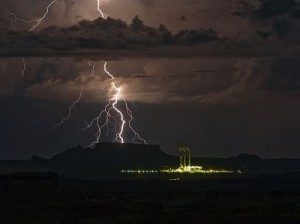
- About 24 thousand people are killed by lightning strikes each year, and about 240 thousand more are injured.
- A lightning bolt is 54 thousand degrees Fahrenheit. That’s hotter than the surface of the sun!
- If a tree is struck by lightning, it can explode because when struck, the liquids inside of the tree instantly turn to gas and expand.
- If lightning hits sand or rocks, it can be petrified and will create lightning fossils.
- The odds of being struck by lightning are 1 in 12 thousand.
Earth

- If you drilled a tunnel straight through the Earth, it would take 42 seconds to for an average person to fall to the other side.
- The legal owner of one-sixth of the Earth is the Queen of the United Kingdom.
- There are more living things in a teaspoon of soil than there are people on Earth.
- There weren’t always a lot of trees on the Earth. The Earth used to be covered in giant mushrooms.
- The Earth used to have a twin planet named Theia, which was about the size of Mars. Theia crashed into the earth. Much of the planet was absorbed
- into the earth, but a small chuck of it flew off and got stuck in orbit, creating our moon.
- Since at least 500 B.C.E., no properly educated person has believed the Earth is flat.
- Earth is actually the only place in the solar system where water exists in all three states (solid, liquid, gas).
Thunder
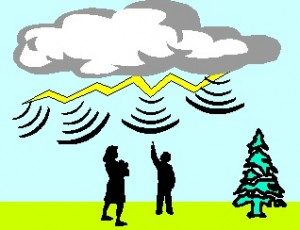
- Thunder is just the sound lightning makes. Light travels faster than sound, so we see the lightning before we hear the thunder.
- Thunder is extremely hard to hear if you’re more than twelve miles away from the storm.
- The closer you are to a storm, the closer together the thunder and lightning will be.
- Astraphobia is the fear of thunder and lightning.
- Philosophers used to believe that thunder was the sound of clouds colliding.
Andromeda
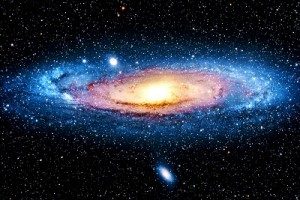
The Andromeda Galaxy is the largest galaxy in the Local Cluster.
The Andromeda Galaxy is coming towards the Milky Way at a speed of 100 to 140 kilometers a second.
It has a very packed and crowded double nucleus.
It has a massive star cluster at its heart.
The Andromeda Galaxy is the most distant thing you can see with your naked eye.
It may also have a super massive black hole.
Jupiter
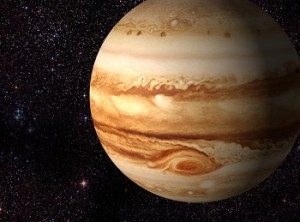
- Jupiter has 67 moons organized into three groups: inner moons, Galilean moons, and outer moons.
- The first sighting of Jupiter that was recorded was around 7th or 8th B.C. by the Babylonians.
- Jupiter has the shortest day of all the eight planets in our solar system.
- Galileo discovered four of Jupiter’s moons in 1610.
- One year on Jupiter is equivalent to about 11.86 years on Earth.
- Only eight space craft have visited Jupiter.
- Jupiter doesn’t have seasons because its axis is only tilted 3.13 degrees.
Clouds

- It takes an hour or less to form a cloud.
- There are a lot of different kinds of clouds, but the most common are stratus, cumulus, and cirrus.
- The reason why clouds appear white is because they reflect the sun’s light. (Like the Moon!)
- People that belong to the religions Hinduism or Buddhism believe that the common Cumulus cloud is the spiritual cousin of elephants.
- There is an international Cloud Committee.
- Any planet with an atmosphere most likely has clouds.
Mars
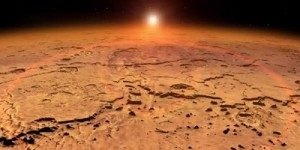
- The month of March is named after Mars.
- If a human went to Mars without a space suit, their blood would turn to bubbles and they would die.
- There are very violent and dark dust storms on Mars.
- The crust of Mars is thicker than Earth’s and it only has one piece. (Earth has multiple pieces called tectonic plates.)
- During a winter in Mars, about twenty percent of the air freezes.
- The average temperature on Mars is minus 81 degrees Fahrenheit.
The Moon
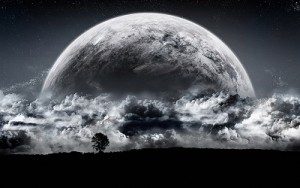
- Scientists believe that the Earth may have had two moons at one point in time.
- The ashes of Eugene Shoemaker, a famous astronomer and geologist, are sprinkled on the moon’s surface.
- The moon has “earthquakes” called moon-quakes that can change the tides of the ocean.
- Lunar dust is as fine as flour but it’s very course and it clings to everything, much like dust on Earth.
- The shadows on the moon are a lot darker than the ones on Earth.
- Neil Armstrong was the first man to walk on the moon at 1969, many still believe this was a conspiracy by the Americans filmed on Earth in order to
- show the Russians they been to the moon first.
Earthquake
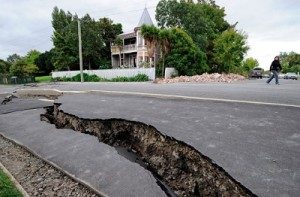
- Earthquakes cause about 8 thousands deaths a year.
- There are more earthquakes in the Northern Hemisphere of the Earth than the Southern Hemisphere.
- There are four types of faults in the Earth: normal, thrust, reverse, and strike-up.
- The longest earthquake recorded in Earth’s history was in the Indian Ocean. The earthquake was in 2004 and it lasted nearly ten minutes.
- The largest earthquake recorded in the United States was in Alaska in 1964. The earthquake was a 9.2 on the Richter Scale.
- An earthquake has the potential to release hundreds times more energy than the atom bomb the United States dropped on Hiroshima, Japan in 1945.
- The deadliest earthquake in recorded history took place in southwest Syria in 1201. The deaths were counted as high as 1.1 million.
Atoms
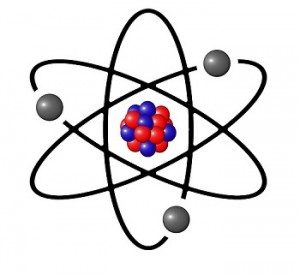
- There are three parts to an atom: protons, neutrons, and electrons. They each balance each other out so the atom doesn’t break apart.
- There are over one hundred different kinds of atoms that we know exist. There are many atoms and elements we haven’t discovered yet.
- The word “atom” comes from the Greek words for “uncuttable” or “undivided”.
- The human body is made up of an average of seven billion atoms.
- The average diameter of an atom is one tenth of a billionth of a meter.
- Atoms are composed of even smaller particles called quarks and leptons.
- The human body replaces 98 percent of those atoms every year.
The Sun
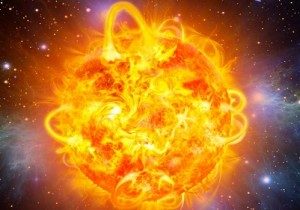
- If the sun was filled up with Earths, you could fit about one million Earths inside the sun. If you compressed all the Earths, you could get up to 1.3 million Earths inside the sun.
- In about 130 million years, the sun will consume the Earth as it becomes a red giant.
- The sun is almost a perfect sphere. There is only a slight compression around the circumference.
- It takes an average of eight minutes and twenty seconds for light from the sun to reach the Earth.
- The sun travels in the galaxy at speed of about 220 kilometers per second.
- The sun is 4.5 billion years old, but it’s only at about middle age for stars.
Volcanoes
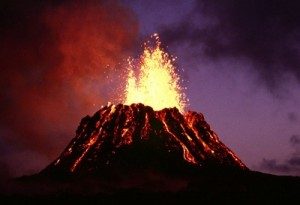
- Volcanoes are actually holes in the surface of the Earth. These punctures in the crust let magma from the core of the Earth bubble to the surface.
- Due to the fact that volcanoes are holes in the surface of the Earth, volcanoes are frequently found at the edges of the Earth’s tectonic plates.
- The most famous volcanic eruptions of modern times include the eruption of Mount Pinatubo in 1991, Mount St Helens in 1980, Novarupta in 1912, and Mount Krakatoa in 1883.
- The biggest known volcano in the solar system is on Mars. It’s about 373 miles (600 kilometers) wide and 13 miles (21 kilometers) high.
- The common gasses that are found when a volcano erupts are: water vapor, carbon dioxide, sulfur dioxide, hydrogen chloride, hydrogen fluoride, and hydrogen sulfide.
- When a volcano erupts, it can send ash and debris up to 17 miles above the Earth’s surface.
- There is a unique volcanic rock called pumice that can float in water.
Oceans
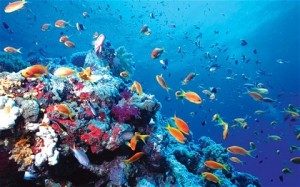
- There are waterfalls under the ocean’s surface.
- You can find more remains and artifacts under the ocean than in all of the world’s museums combined.
- There are around 500 species of sharks living in the ocean today, even though about 80 percent grow to be less than 1.6 meters long and are unable to hurt people.
- Around 50 to 60 percent of life on Earth is found underneath the ocean’s surface.
- Scientists have named and classified around 1.5 million species of sea creatures, and there is as much as 50 million species we have yet to discover.
- The average depth of the ocean is 3,795 meters.
Solar System
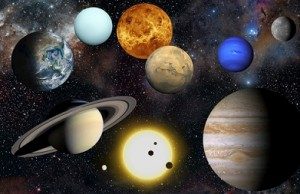
- There are tons of asteroids in our solar system. One of them, Asteroid 243 Ida, even has it’s own moon.
- One of the moons of Saturn, called Mimas, is heavily cratered. This creates an odd appearance similar to the Death Star in Star Wars!
- The largest dwarf planet in our solar system is Eris. It orbits the sun at three times the distance of Pluto.
- The Oort cloud is the farthest object in the solar system. The Oort cloud is a belt much like our asteroid belt that contains trillions of icy bodies. It’s up to 2000 times farther away than Eris.
- If the planet Saturn was placed in water, it would float.
- The dwarf planet Ceres (located in the asteroid belt) contains more fresh water than all of Earth’s fresh water combined.
- Even though there are so many objects in our solar system, the sun still accounts for 99.8 percent of the total mass of our solar system.
Circle of Life
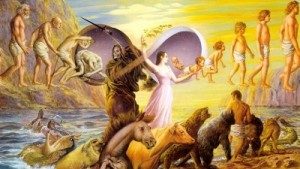
- There are more life forms living on the surface of your skin than there are people inhabiting the Earth.
- The skin of an average human replaces itself 900 times during one lifetime.
- The average person produces about 25 thousand quarts of saliva in a lifetime. That about enough to fill two swimming pools.
- Within three days after you die, the enzymes that help you digest food will start to eat you.
- In all of human history, about 100 billion people have died.
Snow
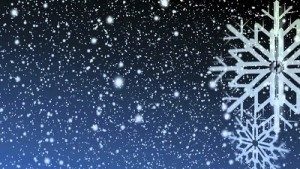
- The tallest snowman was built in 2008 in Bethel, Maine. The snowman, nicknamed “Olympia”, was 37.2 meters (122 feet) tall.
- The first artificial snow was created in March of 1949, by Wayne Pierce, Art Hunt, and Dave Richey. The first snow maker was patented in 1961 by Alden Hanson.
- It also snows on Mars and Venus, even though the snow on Venus is actually flakes of metal.
- Snow is actually colorless. The reason it looks white to us is because very little sunlight is absorbed by snow.
- The average snowflake is made up of 180 billion molecules of water, has six sides, and falls at a speed of 3.1 miles (5 kilometers) per hour.
- The world’s largest snowflake was found at Fort Keogh, Montana in January 28, 1887. It was 15 inches across and 8 inches thick!
Evolution

- Evolution isn’t just a straight line. It’s more of a tree with lots of branches extending from one species to multiple others that have evolved from it.
- Physically, the human body hasn’t changed much in the past 50 thousand years, but better diets, exercise, and environments have increased our lifespan.
- Human hands have actually evolved to be able to do more damage with strike on our fists. Also, our faces have evolved to take a punch.
- The human brain is gradually shrinking. We may be getting smarter, but are brains are becoming more compact.
- Our longer lifespans may be because of our incredibly slow metabolisms, in comparison to other species of animals.
Global Warming
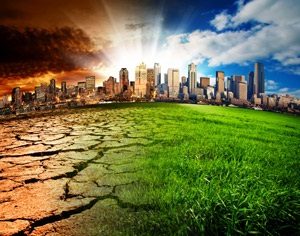
- There is more carbon dioxide in the atmosphere right now than there has been in the last 800,000 years.
- Since 1870, the sea levels around the globe have risen 8 inches due to ice melting at the polar caps.
- There were 150 glaciers in Montana Glacier National Park in the year 1910 when it was established. Now there are only 25.
- If we continue to destroy the forests of the planet, the extensive biodiversity of our planet will decline dramatically.
- If the oceans continue to rise, the Great Barrier Reef will slowly disappear, as will some islands and coastal cities.
- The increasing change in climate increases the amount of smog in the air, which makes asthma worse.
Gold
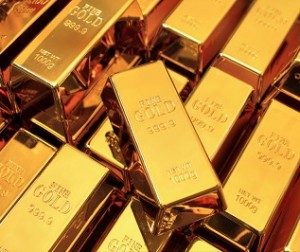
- The reason why gold shines so brightly, even after being buried under the earth, is because very few chemicals found in the earth can attack it.
- If all the gold that humans have extracted over the years were put into a cube, the cube would be 25 x 25 x 25 meters. It would weigh eighty-eight thousand tons.
- Gold is rarer than diamonds.
- The biggest gold nugget that was ever found was found in Australia and weighed 90 kilograms (that’s almost 200 pounds!)
- Since 2008, China has been the world’s largest gold producer. Before China, it was South Africa.
- Gold was the most popular investment to ever exists until the stock market came to be.
Mountains
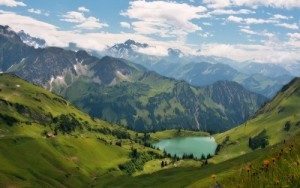
- About 80 percent of the world’s fresh water originates in the mountains.
- The tallest mountain in the world is Mount Everest, which is 29,029 feet high. The tallest mountain in the known universe is 84,480 feet high.
- The world’s highest unclimbed mountain is Gangkhar Puensum in Bhutan. It is 24,982 feet tall, and it is the 40th tallest mountain in the world.
- If Mount Kea in Hawaii were measured from it’s base under the ocean, it would be four thousand feet taller than Mount Everest.
- Because of the constant movement of the tectonic plates on the Earth’s surface, Mount Everest grows four millimeters taller every year.
Desert
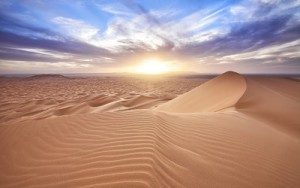
- About one third of the Earth’s land surface is covered by deserts, or partial deserts.
- The largest desert in the world is found in Antarctica. (It doesn’t have to be hot to be considered a desert. It simply has to lose more moisture than it gains.)
- In the Atacama Desert in Chile, there are parts where it has never rained (or at least not that has been recorded). Some scientists believe that some of these portions have been deserts for 40 million years.
- There are still farmers in the Atacama Desert. The population there is 1 million.
- Animals in the desert obtain their water by either storing it inside their bodies or meeting their water needs from the foods they eat.
Trees
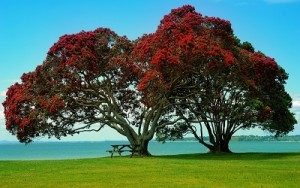
- The most dangerous tree in the world is the manchineel tree found in the Caribbean and Gulf of Mexico. The tree’s trunk is covered with sap that causes skin to blister and can blind you if it gets in your eyes.
- The fruit of the manchineel tree is also very dangerous. When one eats it, the fruit causes ulcers in the mouth.
- Da Vinci created a rule of trees that states if you put all the branches of a tree together it will equal the thickness of the trunk. This rule appears to be true.
- The deforestation of our planet would actually reduce global warming, but there are more benefits to trees than just that, so we keep them.
- Many drugs are made from tress, like aspirin. Aspirin was originally created from willow bark.
- There is a festival held every six years in Japan called the Onbashira festival. During this festival, men ride logs down the side of a mountain to prove their bravery.
Continents
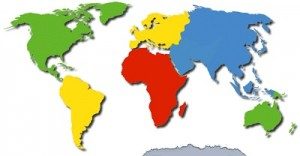
- The names of all the continents end with the same letter with which they start.
- The continent of Asia covers one-third of the earth’s surface. It’s home to 60 percent of the world’s population.
- Australia is the largest island and the smallest continent of the world. It only contains one country.
- Antarctica is the coldest, windiest, and least populated continent in the world. It also is the only continent that contains no countries.
- Africa is the continent with the most countries. It contains the world’s longest river, the Nile, and it also contains the Sahara desert, one of the largest deserts in the world.
- South America contains the highest point on the earth, on Mount Chimborazo in Ecuador.
Seeds

- Plants spread seeds in many ways such as gravity, wind, hooks, animals, pepper pot, exploding, or floating.
- The largest seed in the world is the double coconut. It measures up to 1.6 feet (50 cm) around the middle.
- There were frozen seeds found in Canada, thought to be over ten thousand years old, and when they were defrosted and planted, they still grew.
- If a seed is planted upside down, it will still grow right side up because seeds can sense gravity.
- Some orchid seed pods hold over three million seeds inside of them.
- If you shine a light on a plant from a sideways angle, the plant will grow towards the light and you’ll end up with a sideways plant.
Gravity
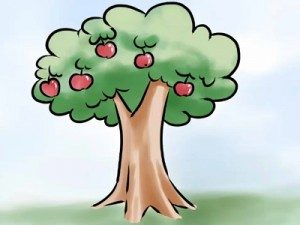
- Around the Hudson Bay in Quebec, Canada, there is less gravity than on most of the other parts of Earth.
- In the movie Apollo 13, the zero-gravity scenes are real. The crew filmed about four hours of material in 612 parabola flights.
- The reason why NASA hasn’t brought any birds to space is because birds need gravity to swallow.
- The pull of gravity on Earth makes it impossible for mountains to be more than a little under 50 thousand feet tall.
- When you light a match in zero gravity, the flame will be round and blue instead of tall and orange.
- If Jupiter had more gravity when the solar system was created, it could have become a second sun.
Minerals
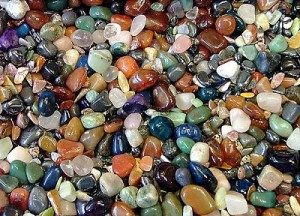
- The foundation of a house is made from limestone, clay, shale, gypsum, and aggregate.
- To maintain our same living standard, every person in the United States needs over 48 thousand pounds of minerals every year.
- There are poisonous minerals. One of the most poisonous is thallium. It’s often called the “dark twin” of lead. Skin contact can lead to serious illness, loss of hair, and in many cases, death.
- Scientists guess that there are more than three thousand minerals spreading on the earth. Most of these minerals haven’t been identified yet.
- The most common mineral found in the earth is quartz.
- The first mineral found that was recorded was a unique kind of turquoise, discovered in ancient Mesopotamia. They also mined jade to make tools and weapons.
Oxygen

- Dry air is only twenty one percent oxygen. The rest is seventy-eight percent nitrogen, and the remaining one percent is a variety of other gases.
- Oxygen doesn’t burn, but it does support the combustion of other substances.
- About two-thirds of the weight of a living thing is oxygen. Most of this weight is because oxygen is a part of water. 88.9 percent of water’s weight is from oxygen.
- If there is another planet discovered that has an atmosphere rich with oxygen, we’ll know it’s most likely inhabited by some sort of life form. Only planets with living things have a significant amount of oxygen on them.
- Oxygen is made in stars. Oxygen is part of the ‘ash’ that is formed when a star burns.
- When you hyperventilate, it’s not an excess amount of oxygen that makes you feel lightheaded and dizzy. It’s actually the fact that you’re forcing too much carbon dioxide out of your lungs.
Eclipse
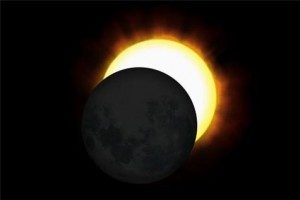
- There are three types of solar eclipses: a total solar eclipse, an annular solar eclipse, and a partial solar eclipse.
- There can be two to five solar eclipses each year, depending on the geometry of the sun, moon, and earth.
- The longest amount of time that a solar eclipse can last is only seven and a half minutes.
- If there are planets in the sky during a solar eclipse, they can be seen as points of light in the sky.
- The longest solar eclipse of the century was on July 22 over India, Napal, Bhutan, and China. It lasted six minutes and twenty-seven seconds.
- Watching an eclipse with a naked eye is extremely dangerous and will harm your vision, it can also potentially make you blind.
Aurora Borealis
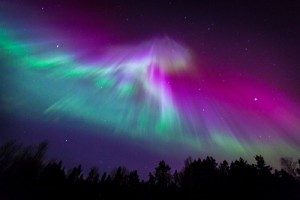
- The colors in the Aurora Borealis are from different kinds of protons and electrons slam into the Earth’s magnetic field.
- The Aurora Borealis is visible from space.
- The Earth isn’t the only planet that has astronomical anomalies like the Aurora Borealis. Jupiter, Saturn, Uranus, and Neptune all have similar spectacles.
- The Aurora Borealis is easier to see with a camera than the naked eye.
- You can’t predict the pattern of the Aurora Borealis. It is completely random each time.
- The Aurora Borealis is only in the North Pole. The South Pole has it’s own set of lights, called the Aurora Australis.
- The colors of the Aurora Borealis depend on the altitude of the lights. Lower altitudes produce blue and green lights, and the higher altitudes produce red and orange lights.
Tornadoes
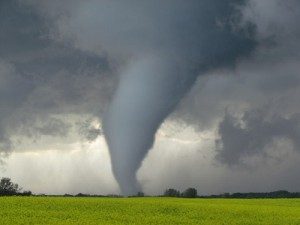
- The country with the most tornado touch downs is the United States of America. Each year, about a thousand tornadoes touch down.
- There have been people who have been sucked into a tornado and lived to tell the tale.
- A tornado that originated in Oklahoma destroyed an entire motel. The motel’s sign was later found in Arkansas.
- A tornado in Mississippi picked up an eighty-three ton train and tossed it eighty feet away from the rails.
- Tornadoes can make lots of noise, or no noise at all. It depends on what debris the tornado has sucked up and is carrying along.
- The winds in a tornado are so strong that knives and forks that have been picked up by the winds are later found embedded deep into tree trunks.
- Once in Oklahoma, a herd of cattle was picked up by a tornado and then set down across the countryside. None of the cattle were harmed.
Tsunami
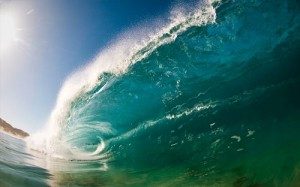
- When a tsunami happens in the deepest part of the ocean, the waves are only one to three feet tall.
- The states in the United States that are most at risk of tsunamis are Hawaii, Alaska, Washington, Oregon, and California.
- The most common cause of a tsunami is an earthquake, but they can also be caused by volcanic eruptions, landslides, rapid changes in atmospheric pressure, as well as other things.
- Scientists guess that an asteroid hit the earth about 48 hundred years ago in the Indian Ocean and created a wave up to six hundred feet high.
- Most palm trees survive tsunamis because their trunks have adapted to strong winds and waves.
- Right before a tsunami (up to half an hour before), the ocean will appear to recede. This is called a “drawback”.
- Some animals have the ability to detect tsunamis, such as elephants, flamingos, dogs, and other creatures.
Rainbow
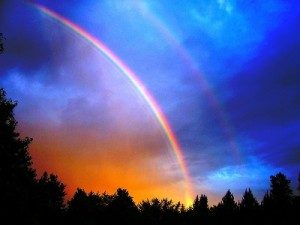
- Two people will never see the same rainbow. This is because every human sees colors a different way. The same shade of red you see might be a completely different shade for your brother or sister.
- The person who discovered there were seven colors in the rainbow was Sir Isaac Newton. Before Sir Isaac Newton, there were many debates on how many colors there were. Homer said it only had one: purple. Aristotle said three: purple, yellow and green.
- Of course, there really aren’t seven colors. Each color fades into the next, creating an impressive array.
- It was Newton’s rival, René Descartes, who, in 1637, discovered rainbows are created from light shining through water droplets.
- The word “rainbow” in Latin is arcus iris or arcus pluvius, which pretty much means a “rainy arch”.
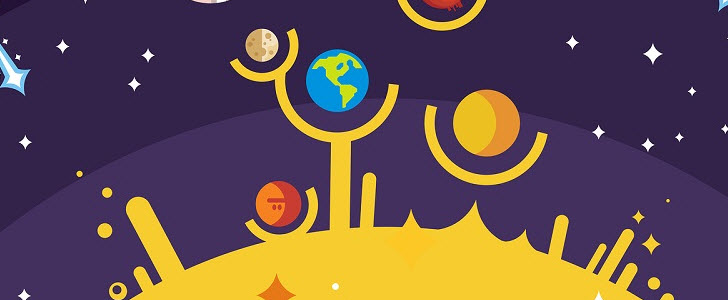


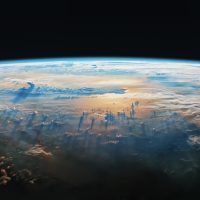








Why can we not hear when we yawn?
When you yawn, both the tensor tympani muscle and the stapedius muscles are tightened. Both these muscles control the amount of sound entering your ear.
What is that Roar sound in space
“space roar” is caused by synchrotron radiation, a type of emission from high-energy charged particles in magnetic fields, and because every source has the same characteristic spectrum, pinpointing the origin of this intense signal is difficult